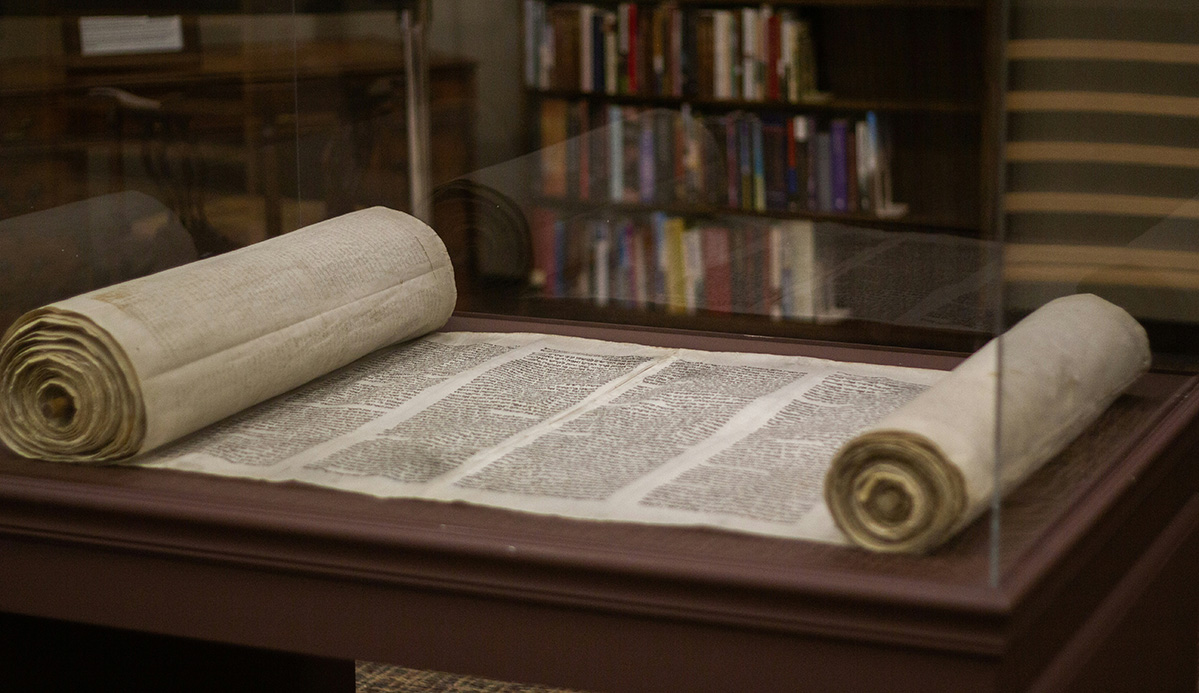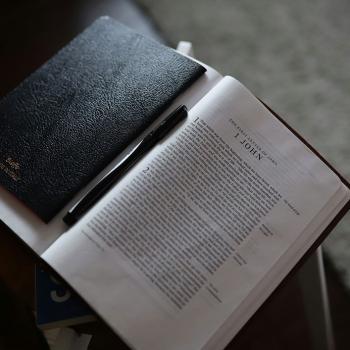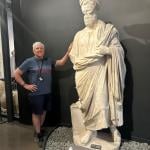
There are vast numbers of biblical manuscript copies (non-originals) in existence today. Not surprisingly, given the long labors of thousands of scribes, there are variations in them. Mistakes happen today even when we have built in spell-checkers and teams of trained people combing through manuscripts searching for errors. (As an example, I remember a time we found a missing comma in one of my books, which actually changed the meaning of the sentence. It was corrected in the next printing.)
There were drowsy scribes, working by candlelight, who missed a line here or added a word there. It had to be a mind-numbing job at times! While we’re told God supernaturally protected the writers of Scripture from error, that promise was never made of everyone who copied it.
In fact, most scribes were extremely diligent, even meticulous in copying and checking and rechecking what they wrote. Sometimes they would count the number of words and even letters of the original and compare it to the copy, to make sure nothing had been added or left out.
The good news for us is that the scribal errors of spelling and inserted or omitted words are normally obvious and easy to spot. They take nothing away from the reliability of the original manuscripts or the basic message of the Bible. In fact, textual critics are certain of 99.5% of the biblical texts. The only uncertainties involve one half of one percent of all Scripture.
The earliest copies of Julius Caesar’s writings go back to 900 A.D.—about 950 years after they were penned. We have none of his originals, yet who questions whether they are accurate representations of what he wrote? There are only seven copies of Plato’s writings, the first of which was copied by a scribe 1,200 years after Plato died! Yet the vast majority of people are confident that what we have is what Plato wrote.
In contrast, there are about 5,686 Greek manuscripts of the New Testament and over 19,000 in Syriac, Latin, Coptic, and Aramaic. This makes nearly 25,000 manuscripts, and some of them date to within 100 years of the originals. One portion of the gospel of John, the Rylands fragment, dates back to A.D. 125, probably about 30 years after John wrote the book. This is unparalleled by any other ancient book. Daryl Witmer, executive director of AIIA Institute, calls these “virtual originals.” By all standards of ancient literature, this brief interval, coupled with the substantial numbers of copies, makes a powerful case for reliability.
New Testament professor Kenneth Berding states, “…if someone wants to question the integrity of the Greek New Testament based upon manuscript evidence, that person ought to be ready to throw out everything he thinks he knows about ancient history, since we have so many more—and better-quality manuscripts—than any other document from ancient history… historians of other ancient documents find themselves wishing they had so many manuscripts to work with.”
Critics have argued that inerrancy became a belief only in the last two hundred years. Norman Geisler argues that a line of continuity can be established going back to the third century. Those throughout history who upheld inerrancy include Augustine, Aquinas, Luther, Calvin, Warfield, Hodge, Wesley, Spurgeon, and many more. Geisler says, “Inerrancy is neither a late nor a denominational doctrine. It is not provincial but universal. It is the foundation for every group that names the name of Christ. . .” (Dr. John Woodbridge carefully refutes the claim that inerrancy was a late developing doctrine in his book Biblical Authority.)
Recommended Reading
When I’ve been asked if I could recommend any good, readable (not too academic) books that deal with the authority and reliability of Scripture, the following have been my recommendations, picking up on the “readable, not too academic” aspect:
You Can Trust the Bible, by John Stott, 94 pages.
Why We Believe the Bible, by John Piper (DVD and study guide)
The Book of God graphic novel
Evidence that Demands a Verdict, by Josh and Sean McDowell, 880 pages, for someone wanting something thorough and detailed, yet still readable.
A unique treatment of this subject is Why You Can Have Confidence in the Bible by Harold Sala, different enough that I will comment on it.
Instead of just writing about the value and importance of the Dead Sea scrolls in confirming the fidelity of ancient manuscripts, Sala tells the story of their discovery. He tells the story of Tischendorf, who rescued priceless findings when he found the monks at Saint Catherine’s Monastery heating their room by burning the pages of some of the most ancient biblical manuscripts in existence.
Sala tells many more stories, ancient and modern. Some readers will think, “Why tell me these stories? I just want the facts.” But those who enjoy the stories will engage the facts (which are definitely included) with more interest. It is 272 pages, but they are very easy reading, and memorable.
You can preview the book on Amazon. There you will see his writing style. Now, I think there are too many stories in this early material. As interesting as Admiral Byrd’s story of the fixed reference point is, and Barna’s stats about how few people read the Bible, and the impact of the Da Vinci Code in undermining faith in Scripture, I found myself wanting to get more quickly to the main purpose of the book. However, Sala does get there, and most of the subsequent stories do serve a good purpose. It is certainly unique and would be a great fit for some readers.
Photo: Unsplash













